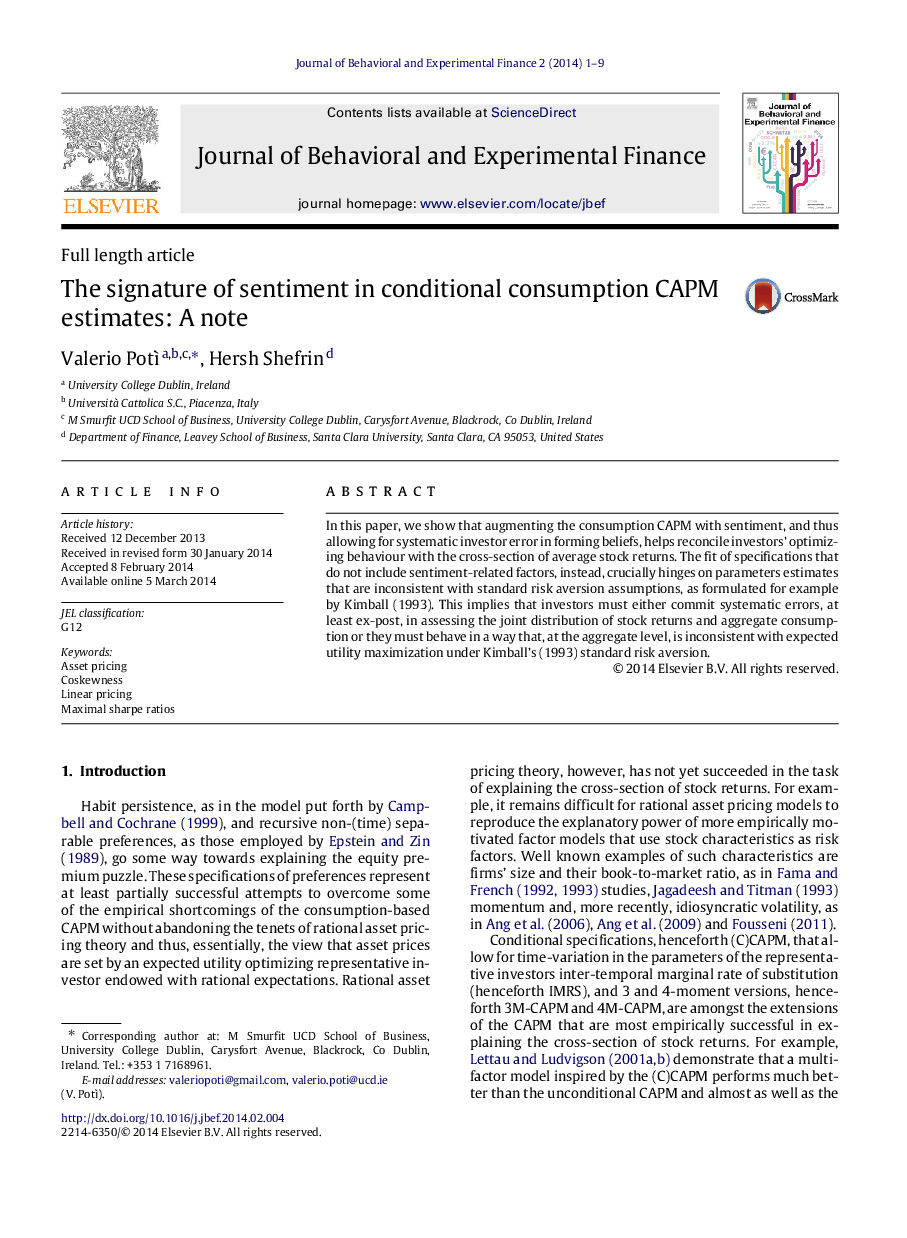| Article ID | Journal | Published Year | Pages | File Type |
|---|---|---|---|---|
| 931710 | Journal of Behavioral and Experimental Finance | 2014 | 9 Pages |
In this paper, we show that augmenting the consumption CAPM with sentiment, and thus allowing for systematic investor error in forming beliefs, helps reconcile investors’ optimizing behaviour with the cross-section of average stock returns. The fit of specifications that do not include sentiment-related factors, instead, crucially hinges on parameters estimates that are inconsistent with standard risk aversion assumptions, as formulated for example by Kimball (1993). This implies that investors must either commit systematic errors, at least ex-post, in assessing the joint distribution of stock returns and aggregate consumption or they must behave in a way that, at the aggregate level, is inconsistent with expected utility maximization under Kimball’s (1993) standard risk aversion.
